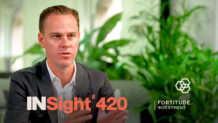Factors come to the fore amid volatility
The COVID-19 pandemic and associated market sell-off became an unexpected testing ground for many of the more recent advancements in financial markets and investing. One growth area that has passed with flying colours, according to its predominantly institutional proponents, is factor investing.
Defined as an investment approach that seeks to target specific drivers of returns across asset classes, such as value, growth, income or size, the strategy has been gaining traction in nearly every major market over the last decade.
Global asset manager Invesco is among the leaders in the space and recently released its ‘Global Factor Investing Study.’ The report seeks input from the diverse range of users of factor-based investment strategies, ultimately receiving responses from 130 institutional investors and 111 wholesale investors that control some US$31 trillion ($43 trillion) in assets.
It is seen as one of the most comprehensive examinations of factor investing in the world, with each report ultimately summarising a significant amount of data into four key takeaways or ‘themes’.
In 2021, the first such theme was the growing realisation that ESG strategies can add to performance and the potential for factor-based strategies to assist with this. According to the study, about 50 per cent of all global respondents and more importantly 56 per cent of those from the Asia-Pacific region, were already using factors to help incorporate ESG into their approach.
By and large, professional investors see factor-based strategies, with their greater controls, as “more compatible with ESG than a market-weighted approach,” which tends to favour the largest companies in the world, and create concentration risk. Interestingly, there is “widespread belief that ESG can potentially enhance performance” but a lack of consensus on whether it is possible to define something as broad as ESG as a single factor.
Long the domain of equity markets, given the greater transparency and accessibility of the secondary market, factor investing continues to grow in the fixed income market. Some 55 per cent of respondents suggest they are using factors within their fixed income component, up from 40 per cent in the year prior.
Not unexpectedly, one of the key drivers behind the greater adoption was cited as the low-yield environment forcing investors to seek a performance edge wherever they can by “uncovering untapped sources of return potential and additional diversification”.
Investors are using both ‘macro’ and ‘investment’ factors within their fixed income allocations with duration, liquidity and inflation all being used by three-quarters of respondents on the macro side. At the investment level, ‘value’ and ‘quality’ remain the most popular, with yield not far behind.
Investors are clearly not relying on single-factor approaches, but rather assessing portfolios across multiple factor exposures and using these strategies to implement both long-term ‘strategic’ allocation changes, as well as more ‘dynamic’ short-term responses to changing market conditions.
Just 22 per cent of those using factors are looking to keep their exposures ‘fixed,’ while 41 per cent expect to become more dynamic in the next two years as the macro-economic conditions continue to evolve. One area identified as having room for improvement is the need for “better tools for monitoring exposures and attributing performance,” which despite sophisticated analytics used by some investors isn’t yet widely available.
Both institutional and wholesale investors are rapidly increasing their use of factor-based exchange traded funds (ETFs) due to the many use-cases they offer and the ability to ‘complete’ portfolios or make short-term, low-cost tactical allocations, such as to the ‘value’ factor, where 44 per cent of respondents expect to increase exposure in the coming year.
Ultimately, the pandemic was seen as a test of the ‘factor approach’, along with the central banks, the bond market and even more recently launched ETFs, which it seemingly passed with flying colours.
For those interested the full study is available to download here.











